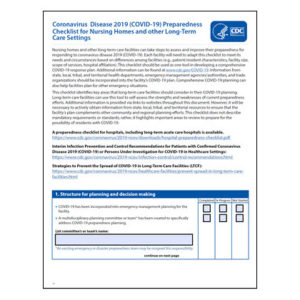5 Steps to Preventing Cyberattacks
Cyberattacks can cause big consequences for senior care facilities. Your facility may be liable for any losses sustained by residents, and often victims pursue legal action against the facility. This may result in a huge financial loss and also a major “loss of reputation,” according to Dean Chester, a security evangelist and researcher at CoolTechZone.

Dean Chester, security evangelist and researcher at CoolTechZone
Chester says senior living facilities and other medial facilities “are targeted very often” for several reasons, “the most important one being the absence of strong cybersecurity. This is especially true for smaller business that cannot afford professional-level security.”
So how can you help prevent cyberattacks? Follow these five steps:
- Encourage awareness. “Make sure you’re training your employees and let them know that these attacks are happening. Give them examples of the most common types of attacks,” so they can be on the lookout for them, Hanson says. Simply knowing that clicking on an email attachment from an unknown party can grant access to the entire network can help your employees avoid phishing scams. Chester adds that training your employees is the “most important piece of advice” he can offer with regard to improving cybersecurity.
- Maintain a backup copy. Chester says maintaining a backup copy of all your digital data is crucial for reducing the impact of a ransomware attack. This back-up “should be updated on a daily or at least weekly basis,” and it’s important to “keep those backups on devices that are not connected to the internet or intranet to prevent them from being locked if malware gets into the system.”
- Keep your software up to date. And that means all of it, Chester says. “That includes operating systems as well as antivirus software. Those updates help patch vulnerabilities that hackers may exploit.”
- Develop a plan. Having a plan for how you’ll handle an attack should one occur can help you and your employees be more prepared for all eventualities and better able to respond. “Know what your first stop will be and how you’ll react to an attack. If they’re handled appropriately, they don’t amount to much,” Hanson says. “You can get out in front and close it off pretty quickly,” but you have to be prepared. As Chester notes, there’s no 100% guarantee that a cyberattack won’t happen, even when you’ve taken the appropriate preventive steps, so having a plan in place in case one occurs will help you respond appropriately.
- Get insurance. Hanson also recommends having a cyber insurance policy to help you rebuild in the event of a crisis. Cyber insurance policies can cover legal fees and other losses associated with a cyberattack.
Learn more about protecting your facility from cyber criminals in our new article: Is Your Senior Care Facility Safe from Cyber Criminals?

Elaine K. Howley is a freelance journalist for various publications. An award-winning writer specializing in health, fitness, sports and history, her work has appeared in numerous print and online publications, including U.S. News, AARP.org, espnW, SWIMMER magazine and Atlas Obscura. She’s also a world-record holding marathon swimmer with a passion for animals and beer. Contact her via her website: elainekhowley.com.
Related Articles
Topics: Administration , Executive Leadership , Featured Articles , Information Technology , Risk Management , Technology & IT











